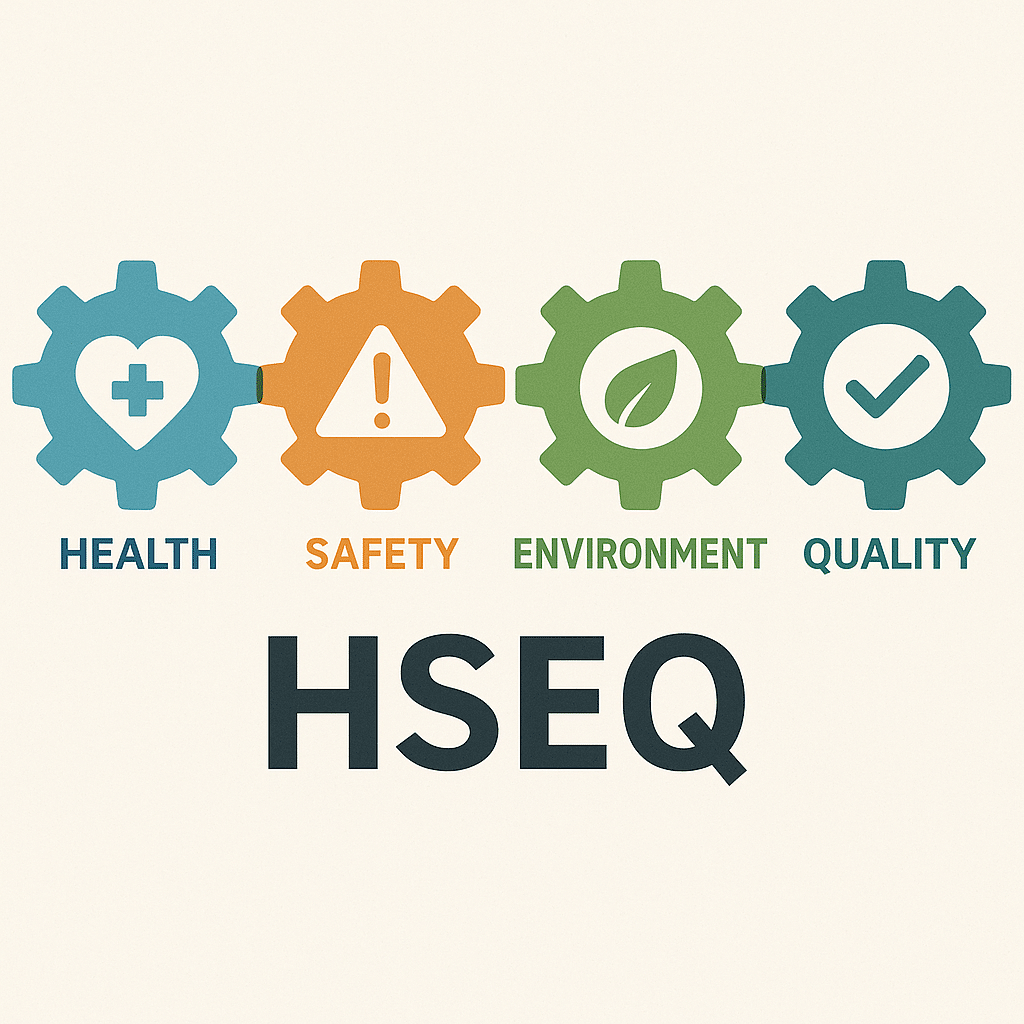C stands for Health, Safety, Environment, and Quality. It is a comprehensive management approach that integrates critical operational areas to ensure not only compliance and safety but also excellence in process and product standards.

At the beginning of modern industrial safety culture, these disciplines were often managed in silos. Today, organizations recognize the interdependence between worker well-being, environmental stewardship, and consistent quality control — and that’s where HSEQ becomes essential.
This article explores the full meaning of HSEQ, the difference between HSEQ and QHSE, its unique application in maritime operations, and how organizations can craft a robust HSEQ strategy to drive performance and compliance.
What is the Meaning of HSEQ?
HSEQ refers to the integrated framework that combines:
- Health: Occupational health management for employees and stakeholders.
- Safety: Preventing workplace injuries and ensuring regulatory compliance.
- Environment: Minimizing environmental impact through sustainable practices.
- Quality: Maintaining high standards in products, services, and processes.
The goal of HSEQ is to promote a culture of continuous improvement where safety, sustainability, and performance are interconnected. Organizations that adopt an HSEQ system often see lower incident rates, reduced environmental fines, and improved customer satisfaction.
Example: A chemical manufacturing facility using an HSEQ model may conduct regular environmental impact assessments, ensure rigorous PPE protocols, and implement ISO 9001-certified quality assurance systems — all under one strategic framework.
What is the Difference Between HSEQ and QHSE?
While HSEQ and QHSE are often used interchangeably, the difference lies in word order and organizational focus.
| Acronym | Stands For | Primary Focus |
|---|---|---|
| HSEQ | Health, Safety, Environment, Quality | Often safety- or health-driven, especially in heavy industries. |
| QHSE | Quality, Health, Safety, Environment | Quality may lead the framework, common in manufacturing and services. |
Both frameworks address the same four pillars, but in QHSE, the emphasis may begin with product or service quality, followed by health, safety, and environmental standards. In contrast, HSEQ typically prioritizes health and safety, often in high-risk environments such as oil rigs, marine vessels, and construction.
Internal Use vs Industry Norms
Some industries adopt one acronym over the other due to regulatory or historical norms. For example:
- Aviation, shipping, and oil & gas often refer to HSEQ.
- Pharmaceuticals and automotive may prefer QHSE due to their emphasis on product quality.
Regardless of the order, what matters is how effectively the organization integrates these four pillars into its daily operations.
What Does HSEQ Stand For on Ships?
In maritime industries, HSEQ on ships refers to the systematic approach adopted by shipping companies to manage:
- Crew health and safety
- Pollution control and environmental compliance
- Onboard quality management systems
Shipping operations face unique safety and environmental challenges, including:
- Hazardous cargo handling
- Extreme weather conditions
- International environmental conventions like MARPOL and SOLAS
To address these, shipowners and operators implement HSEQ programs that include:
- Risk Assessments for all shipboard operations.
- Training Programs under ISM (International Safety Management Code).
- Preventive Maintenance Systems for equipment to ensure quality and safety.
- Emergency Drills to prepare for fire, oil spills, and abandon-ship scenarios.
A well-structured HSEQ plan on ships ensures vessels meet flag state requirements, safeguard marine ecosystems, and deliver high-quality service without compromising crew welfare.
What is the HSEQ Strategy?
An HSEQ strategy is a structured plan that outlines how an organization will integrate health, safety, environmental, and quality standards into its business operations and culture. It provides a blueprint for compliance, risk management, and performance improvement.
Key Components of an HSEQ Strategy:
- Leadership Commitment
Senior management must drive the culture by setting policies and allocating resources. - Risk-Based Approach
Identify, assess, and control risks across all four areas (e.g., air emissions, workplace accidents, supplier defects). - Regulatory Compliance
Ensure adherence to laws like OSHA, ISO 14001 (Environmental Management), and ISO 9001 (Quality Management). - Training and Competency
Build employee awareness and competence through regular training programs. - Monitoring and KPIs
Define Key Performance Indicators such as Lost Time Injury Frequency Rate (LTIFR), customer complaint rates, or carbon footprint reduction. - Continuous Improvement
Adopt the PDCA cycle (Plan-Do-Check-Act) for all HSEQ initiatives. - Stakeholder Engagement
Involve employees, contractors, clients, and regulators in feedback loops and performance reviews.
Sample HSEQ Strategy Vision Statement:
“To deliver operational excellence by embedding health, safety, environmental, and quality values across all levels of the organization, ensuring safe workplaces, sustainable growth, and satisfied stakeholders.”
Why Is HSEQ Critical for Business Success?
Implementing a strong HSEQ framework leads to:
- Fewer Workplace Accidents → lower compensation costs and downtime.
- Regulatory Confidence → fewer fines, smoother audits.
- Environmental Stewardship → reduced waste, improved community relations.
- Brand Reputation → demonstrates corporate responsibility and commitment to quality.
For instance, companies like Shell, Maersk, and Siemens have public HSEQ policies that align with global sustainability goals and protect their brand value.
According to a report by McKinsey, companies with mature HSEQ systems see over 30% fewer incidents and higher workforce retention.
HSEQ is not just a set of policies — it’s a strategic culture shift toward sustainable, safe, and quality-driven operations. Whether on a ship, in a factory, or at a construction site, HSEQ ensures that people, planet, and products are protected equally. By investing in a clear HSEQ strategy, organizations position themselves for long-term success, compliance, and trust.
HSEQ is more than an acronym — it’s a commitment to do things right, safely, and responsibly.
Learn how to build a Zero Harm Culture in your workplace – OHSE.ca
See our full article on Confined Space Safety – OHSE.ca
Learn more about ISO 45001 – International Organization for Standardization (DoFollow)
Discover the meaning of MARPOL (DoFollow) – International Maritime Organization
Understand PDCA Cycle – American Society for Quality (DoFollow)
Leave a Reply